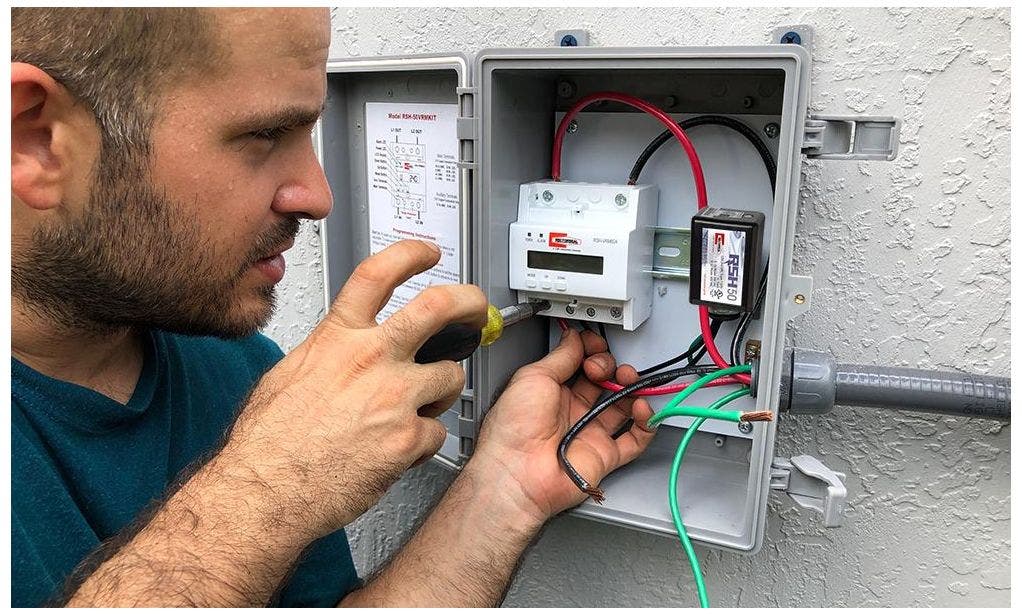Selecting a surge protector for your HVAC system
To make an educated decision when selecting a surge protector for your HVAC system, it is important to dispel some common myths. With so many choices on the market, it can be difficult to cut through the noise and figure out what product is right for you. Let’s take a look at three myths about HVAC surge protectors so that you can make an informed decision. Surge protectors are available for both ducted and ductless systems. It's highly recommended that a surge protector should be installed by a qualified HVAC contractor or licensed electrician.
Myth 1: All surge protectors are created equal.
While many surge protectors appear similar at first glance, there are actually a variety of factors that you need to consider when choosing the right one for your HVAC system. Make sure to look for a surge protector that is specifically designed for HVAC systems. This will ensure that it can handle the unique power demands of your system. Select HVAC surge protectors with features that include the ability to withstand multiple repetitive power surges, and extreme temperatures and humidity.
Even within the HVAC surge protector market, some have better performance ratings that indicate how well the protector will do its job under extreme power surge situations. The Nominal Discharge Current Rating from UL (Underwriters Laboratories) is the recognized industry standard for test ratings of surge protectors. Another differentiator is advanced Gas Discharge Tube (GDT) Technology. GDT technology dissipates a surge across multiple pathways, effectively dissipating a larger surge than other models on the market. The GDT in itself is classified as a surge arrestor and is a robust standalone component handling surge energy as high as 60,000 amps. In the HVAC industry this technology is offered exclusively by Rectorseal.
Myth 2: The more MOV’s, the better the surge protector.
The Metal Oxide Varistor (MOV) is the part of the surge protector that absorbs excess voltage and dissipates it as heat to ground. So, you may think that the more MOVs in a surge protector, the better it will be at protecting your HVAC system. That is not true. Multiple MOVs in a circuit need to perform at the same time to ensure performance. This coordination of components is extremely difficult to design and manage. Thus, leading to circuit failure as one MOV will take the brunt of the damage, leaving others less protected. The “weakest link in the chain” is the best way to describe it. A surge protector with fewer, but larger MOVs is more effective at dissipating a surge.
Myth 3: Surge protector physical size – Bigger is Better.
It is not always the case that a bigger-looking surge protector ensures better performance. In fact, some of the larger surge protectors on the market may have a lower MOV rating than smaller models. The key is to look for a surge protector that is specifically designed for HVAC systems and has reliable performance ratings. Smaller, better performing surge protectors, also offer the installation versatility and options. A good example of this is having the ability with a more compact device, to install the surge protector inside a piece of equipment.
 A bigger surge protector may present installation challenges. It’s important to make sure the surge protector you select will fit in the available space and that all wiring will reach the appropriate terminals. For example, RectorSeal's RSH-50 is small and versatile that it can fit into a disconnect box without sacrificing ratings or functionality. Making an informed decision about which HVAC surge protector to purchase is important to protect your investment in dependable indoor comfort. When it comes to surge protection for your HVAC system, don’t believe everything you hear. Now that we have dispelled some common myths about HVAC surge protectors, you can feel confident in your decision-making process. With so many choices on the market, you are sure to find a surge protector that meets your needs and keeps your customers' HVAC systems operating dependably and efficiently.
A bigger surge protector may present installation challenges. It’s important to make sure the surge protector you select will fit in the available space and that all wiring will reach the appropriate terminals. For example, RectorSeal's RSH-50 is small and versatile that it can fit into a disconnect box without sacrificing ratings or functionality. Making an informed decision about which HVAC surge protector to purchase is important to protect your investment in dependable indoor comfort. When it comes to surge protection for your HVAC system, don’t believe everything you hear. Now that we have dispelled some common myths about HVAC surge protectors, you can feel confident in your decision-making process. With so many choices on the market, you are sure to find a surge protector that meets your needs and keeps your customers' HVAC systems operating dependably and efficiently.
Please visit www.rectorseal.com for additional details, and follow us on LinkedIn, Facebook, YouTube, Instagram, and Twitter for the latest product enhancements and news.

